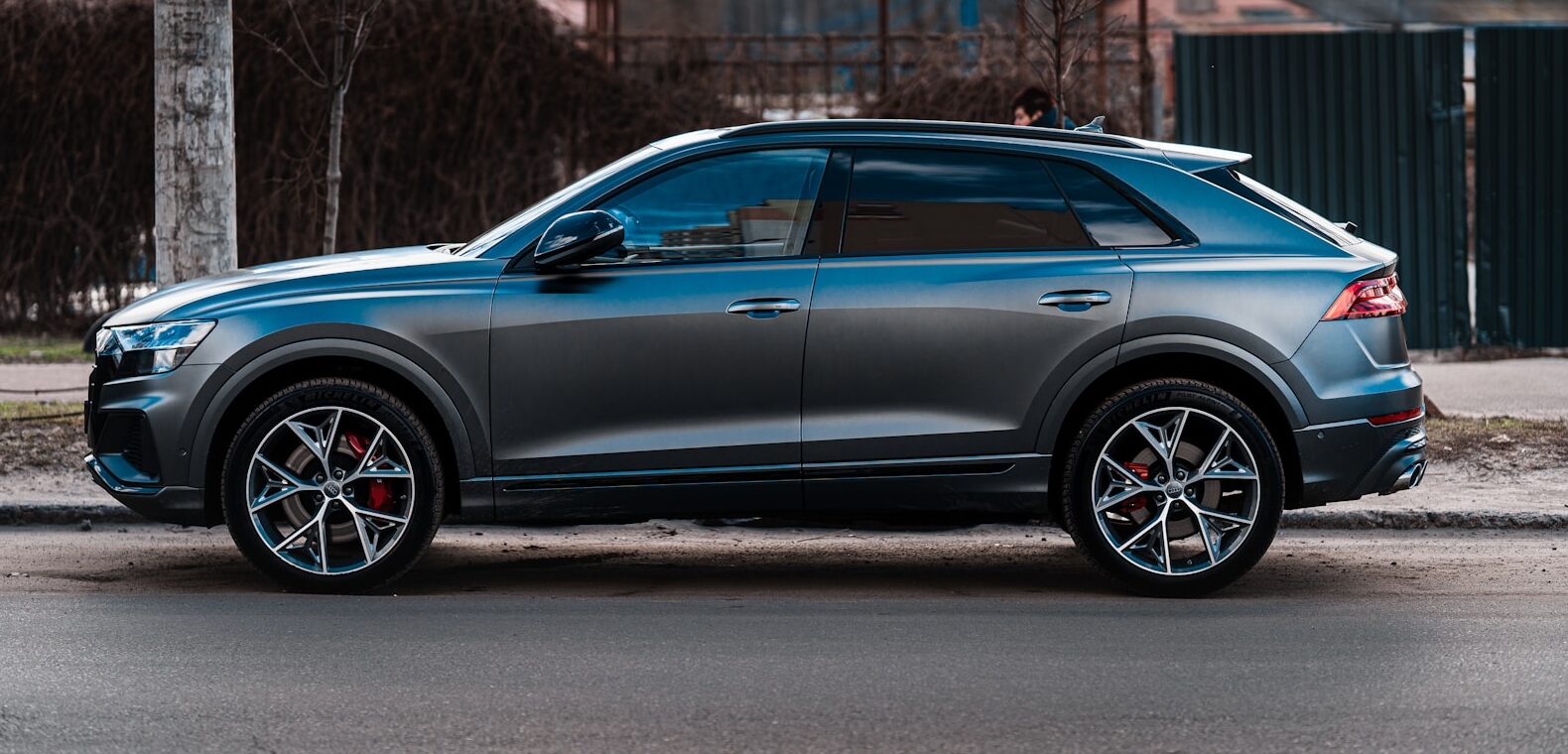Auto auctions sell cars to the highest bidder, fast. These events move hundreds, sometimes thousands, of vehicles in a single day. Whether in person or online, auctions give buyers a shot at getting cars far below retail value.
So, why do smart buyers line up? It’s simple: lower prices and more choices. You’ll find everything from basic sedans to luxury SUVs on one auction list. Some deals close in seconds, and those quick wins keep people coming back.
Did you know the U.S. auto auction market hit $3.32 billion in 2023? It’s expected to pass $4.1 billion by 2029. That’s not just growth, it’s a shift in how people buy cars.
Types of Auto Auctions

Public Auctions
Public auctions are open to anyone. No dealer license needed. You just register, show up, and bid. These events often list used cars from banks, fleets, or private sellers. Expect a wide range, clean titles, older models, and even a few fixer-uppers.
Dealer-Only Auctions
These auctions keep the public out. Only licensed dealers can enter. Why? Because the inventory often includes trade-ins, lease returns, and newer wholesale units. Prices stay competitive, and bidding gets aggressive. Dealers hunt for resale-ready units to flip fast.
Online Auctions
Online platforms changed the game. Now, buyers can bid from anywhere. Platforms like Copart, IAAI, and Manheim let users view cars, read condition reports, and place real-time bids. No travel, no waiting. Online auctions also move faster and offer more volume than most local lots.
Specialty Auctions
These auctions focus on niche cars: salvaged titles, rare classics, luxury rides, or government surplus. Want a flood-damaged Camaro for parts? Or a vintage BMW? This is where those deals live. But watch out, specialty auctions require more research and risk control.
How the Auto Auction Process Works

1. Registration
Before you bid, you register. Most auction houses ask for a valid ID, a refundable deposit, and sometimes a small registration fee. You must agree to the auction’s terms. Skip that step, and they won’t let you bid.
Some auctions verify your payment method in advance. So, keep a bank card or certified funds ready when you sign up.
2. Inspection & Research
Don’t just bid blind. Start with a deep dive. Most auctions let you check cars on-site before the event. If not, the listing should include photos, condition reports, and the VIN.
Need to know the real state of a vehicle? Look at the grade sheet or damage report. Some auctions hire third-party inspectors to rate the engine, transmission, and frame. You won’t get a test drive, but you’ll see things like leaks, warning lights, or frame rust.
Confused by grading systems? Learn them. One car might be a Grade 4 (clean runner), while another is Grade R (repairable). This info matters more than mileage.
3. The Bidding Process
Live auctions use paddles. Online ones use clicks. Either way, once bidding starts, you move fast. Most cars close within 20 to 60 seconds.
What happens if nobody hits the reserve price, the minimum a seller will accept? The car won’t sell. But hit that mark, and the highest bid wins. Once the hammer drops, you’re locked in. That bid becomes a binding agreement. No backing out.
Worried about overbidding? Set a ceiling price before the auction begins. Stick to it.
4. Payment and Fees
Win a bid? Time to pay up. Auctions expect full payment within 24 hours. Some give you 48, but don’t count on it.
Most accept wire transfers, certified checks, or direct bank payments. Credit cards? Rarely. Some auctions charge a buyer’s premium, usually 5% to 15% of the final price. It stacks fast.
That’s not all. You might face extra costs: title transfer, admin fees, and storage charges if you don’t pick up the car quickly.
5. Pickup or Delivery
Once you pay, the clock starts ticking. Pick up the car yourself or send a transporter. Many buyers use licensed haulers, especially if they bought online.
Exporting? Auctions in Japan or the U.S. often help with paperwork and shipping. You’ll need to handle customs, transport fees, and import duties, but the auction house might assist with that process.
Types and Sources of Vehicles Sold
Auto auctions pull cars from every corner of the market. Banks send repossessed vehicles. Rental companies unload fleet units. Leasing agencies and private sellers bring in daily drivers, off-lease returns, and even luxury models.
You won’t just find clunkers. Auctions feature used, nearly new, salvage, and even classic cars. Some listings include ex-police cruisers or retired government vehicles. Want a project car? Or a late-model SUV with minor dents? It’s probably on the lot.
But here’s the catch: almost every vehicle sells as-is. That means no warranty, no guarantees, and no backing out once you win. Most auctions use light systems to signal condition. A green light might mean the car runs well. A red light? Major mechanical issues. Know what those signals mean before you raise your paddle.
Pros and Cons for Buyers
Advantages
Why do so many buyers trust auctions? One word, value. Cars often sell well below retail. That alone pulls in flippers, dealers, and everyday drivers looking for a deal.
Second, you get huge variety. One auction might feature a Honda Civic, a Ford F-150, and a vintage Mustang, all on the same day. Where else can you shop that wide?
Third, auctions move fast. You can bid, win, and own a car, all in under an hour. No long dealership talks. No drawn-out haggling.
Disadvantages
But auctions aren’t for everyone. Test drives? Forget it. Most auctions won’t let you drive the car, not even around the lot.
And remember, once you win, you can’t return the vehicle. That’s why solid research matters. One mistake could cost you thousands.
Also, the process may feel overwhelming at first. Fast bidding, auction rules, fee structures, it can confuse new buyers. But hey, isn’t every skill tough at the start?
Key Market Stats (2023–2029)
Let’s look at the numbers. The U.S. auction market hit $3.32 billion in 2023. Forecasts expect it to reach $4.13 billion by 2029. That’s steady growth with plenty of opportunity.
In 2023 alone, auction houses moved 13.84 million vehicles. That’s not a typo. Millions of cars passed through lanes and digital platforms nationwide.
Online auctions now dominate the scene. This digital shift lets buyers place remote bids, access wider inventories, and skip in-person hassles. It’s the fastest-growing channel in the industry.
Salvage auctions also hold major value. Many of these vehicles sell for just 39% to 57% of their retail worth. Smart buyers fix them up, then resell for profit, or keep them as low-cost rides.
Looking overseas? In Japan, USS Co. Ltd. leads the pack. It claimed 39.6% of the market in 2023, moving over 3.16 million units. That makes it one of the world’s top auctioneers.
Tips for First-Time Auction Buyers
First time bidding? Don’t jump in blind. Set a firm budget before the auction starts. Know the highest amount you’ll spend, and stick to it. When bidding gets heated, it’s easy to overspend.
Next, dig into every report. Look at the car’s history, check for accidents, salvage titles, or unpaid liens. One missed detail can turn a good deal into a money pit.
Know the fees. Every auction adds a buyer’s premium, plus title transfer or storage charges. Add those costs into your budget. That $4,000 bid might end up costing $4,600.
Pay attention to light signals during the auction. Green means go, usually a clean ride. Red means major problems. Yellow might signal title issues or frame damage. Know what each light means before you bid.
And here’s the last step: have your payment ready. Most auctions want full payment within 24 hours. If you delay, they might charge late fees, or cancel your win.
The Rise of Online Auto Auctions
Online auctions now lead the industry. Sites like Copart, IAAI, and Manheim give buyers the power to bid from anywhere. No travel. No waiting. Just log in and place your bid.
Remote bidding makes life easier. You can access cars from across the country, or even overseas. Many buyers in Bangladesh, for example, import directly from Japanese auctions.
Worried about condition? Don’t be. Virtual inspections give clear, high-resolution photos, damage tags, and even condition grades. Some auctions offer 360° views and frame check reports.
You also get access to a larger inventory. A local auction might list 200 cars. Online, you can choose from thousands, across every make, model, and year.
And the platforms keep improving. Trusted sites now offer clear terms, secure payment systems, and real-time bidding tools. That builds trust and cuts out shady deals.
Conclusion
Auto auctions unlock deals you won’t find at a dealership. But they move fast and follow strict rules. Want to win? You need a game plan.
Know the auction process. Study each car’s background. Understand your limits. That’s how smart buyers stay ahead.
In-person or online, it doesn’t matter. What matters is knowledge. The more you prepare, the better your chances of scoring a solid deal at the right price.
Frequently Asked Questions (FAQs)
- What is an auto auction and how does it work for buyers?
Auto auctions are public or dealer-only sales where vehicles go to the highest bidder. Buyers register, inspect vehicles, bid live or online, and pay if they win. - Can anyone buy a car at an auto auction?
Public auto auctions allow anyone to register and bid. Dealer-only auctions require a licensed dealer. Online auctions may have specific registration rules but generally open more access. - How do I register to bid at an auto auction?
Buyers must provide valid ID, pay a refundable deposit or registration fee, and agree to auction terms. Some auctions verify payment methods before allowing bids. - How can I inspect cars before bidding at an auction?
Many auctions offer on-site inspections or detailed online listings with photos, condition reports, and vehicle history. Understanding grading systems helps evaluate a car’s condition. - What does “as-is” mean in auto auctions?
“As-is” means cars sell without warranties or guarantees. Buyers accept the vehicle’s current condition and cannot return it after purchase. - Are there additional fees besides the winning bid?
Yes. Buyers often pay a buyer’s premium (5-15% of the final price), plus title transfer, administrative, and storage fees. - How fast do bids close at an auto auction?
Vehicles typically sell within 20 to 60 seconds after bidding opens. The process is fast-paced, so buyers must act quickly. - What types of vehicles are sold at auto auctions?
Auto auctions sell used cars, nearly new vehicles, salvage cars, fleet and rental vehicles, classic cars, and government surplus vehicles. - Can I test drive a vehicle before buying at an auction?
Most auctions do not allow test drives. Inspection relies on reports, photos, and visual checks during preview days. - How do online auto auctions work?
Online auctions let buyers view vehicles remotely, place bids in real time, and pay online. They offer a wider selection and convenience without visiting the auction site. - What are the risks of buying a car at an auto auction?
Risks include limited inspection, no warranty, fast-paced bidding pressure, and potential hidden damages. Research and preparation reduce these risks. - How do I set a bidding limit to avoid overspending?
Determine your maximum bid based on market value, condition reports, and total fees. Stick to your limit during bidding to avoid emotional overspending. - Can international buyers participate in auto auctions?
Yes. Many auctions, especially in Japan and the U.S., support international buyers with export paperwork and shipping logistics. - What is a buyer’s premium in auto auctions?
It’s an extra fee charged by auction houses on top of the winning bid, usually 5% to 15%, which covers auction operations. - How has the auto auction market grown recently?
The U.S. market grew to $3.32 billion in 2023 and is expected to reach $4.13 billion by 2029, with online auctions leading growth.




